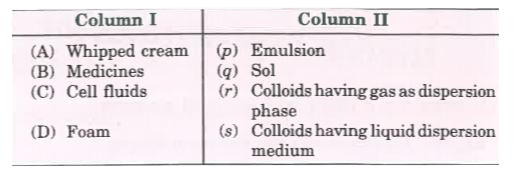Match the activity given in Column I with the type of pollution created by it given in Column II.
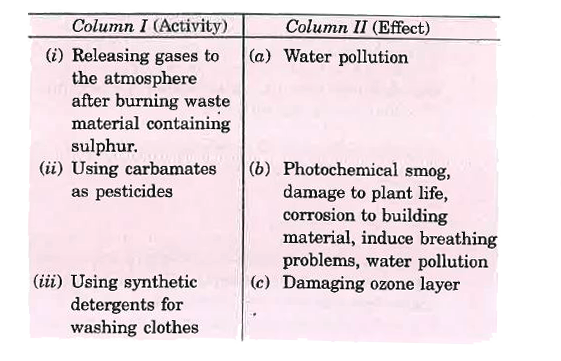

Video Solution
Text Solution
(i)-(e),(ii)-(d),(iii)-(a),(iv)-(b),(v)-(c)
|
Updated on:21/07/2023
Topper's Solved these Questions
- BOOK - MODERN PUBLICATIONCHAPTER - ENVIRONMENTAL POLLUTION EXERCISE - REVISION EXERCISES (Objective/Very Short Answer Questions ( Passage Based Questions ))5videos
ENVIRONMENTAL POLLUTION
- BOOK - MODERN PUBLICATIONCHAPTER - ENVIRONMENTAL POLLUTION EXERCISE - REVISION EXERCISES (Objective/Very Short Answer Questions ( True or False Questions ))10videos
ENVIRONMENTAL POLLUTION
- BOOK - MODERN PUBLICATIONCHAPTER - ENVIRONMENTAL POLLUTION EXERCISE - NCERT FILE ( NCERT EXEMPLAR PROBLEMS(Matching Type Questions ) )1videos
ENVIRONMENTAL POLLUTION
- BOOK - MODERN PUBLICATIONCHAPTER - CLASSIFICATION OF ELEMENTS AND PERIODICITY IN PROPERTIES EXERCISE - UNIT PRACTICE TEST13videos
CLASSIFICATION OF ELEMENTS AND PERIODICITY IN PROPERTIES
- BOOK - MODERN PUBLICATIONCHAPTER - EQUILIBRIUMEXERCISE - Unit Practice Test13videos
EQUILIBRIUM
Similar Questions
Knowledge Check
- Question 1 - Select One
Observe the table given below and match the reaction given in column I with the type of reaction given in column II.
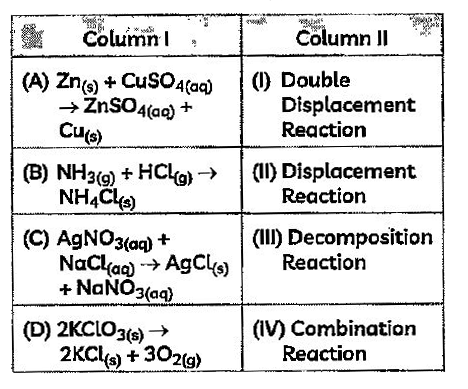 A(A)-(I), (B) - (IV), (C) - (II),(D)-(III)B(A)- (I), (B) - (IV), (C) - (III), (D) - (II)C(A)- (II), (B) - (IV): (C) - (III), (D) - (I)D(A)- (I), (B) - (IV), (C) - (I), (D) - (III)
A(A)-(I), (B) - (IV), (C) - (II),(D)-(III)B(A)- (I), (B) - (IV), (C) - (III), (D) - (II)C(A)- (II), (B) - (IV): (C) - (III), (D) - (I)D(A)- (I), (B) - (IV), (C) - (I), (D) - (III) - Question 2 - Select One
Match the formulas of oxides given in Column I with the type of oxide given in Column II and mark the correct option.
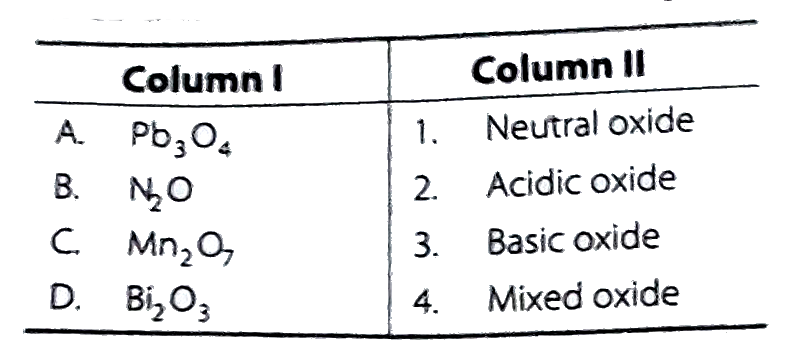 AABCD1234BABCD4123CABCD3241DABCD4312
AABCD1234BABCD4123CABCD3241DABCD4312
Match the polymers given in column I with the type of linkage present in them given in column II
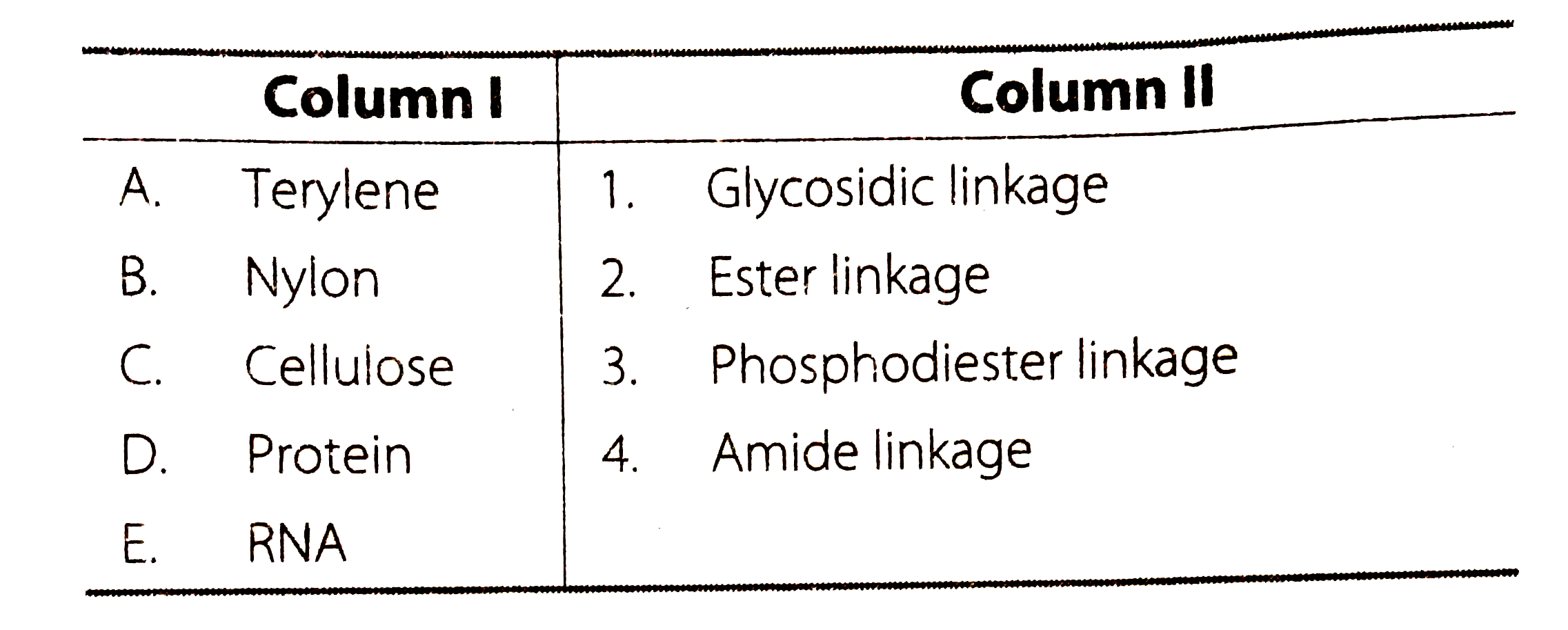 View Solution
View SolutionMatch the reactions given in Column I with the types of reactions given in Column II.
 View Solution
View SolutionMatch the reactions given in column I with the types of reactions given in column II.
 .View Solution
.View SolutionMatch the reactions given in Column I with the types of reactions given in Column II.
 View Solution
View SolutionMatch structures given in Column I with the type of detergents given in Column II.
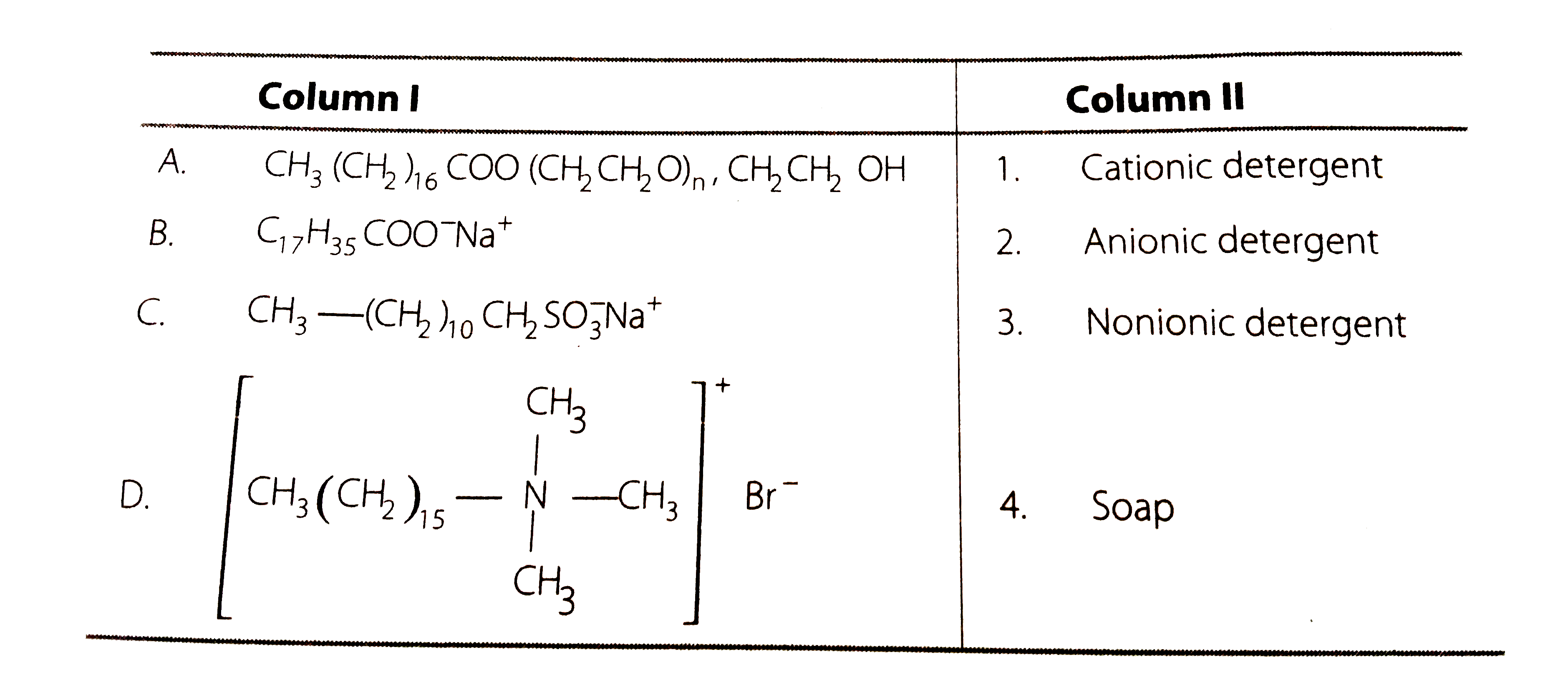 View Solution
View SolutionMatch the reactions given in Column I with the types of reactions given in Column II.
 View Solution
View Solution


